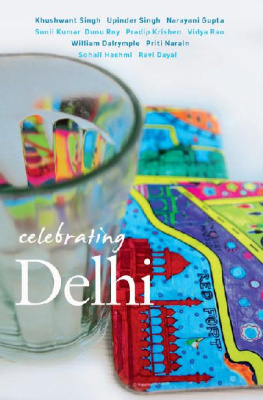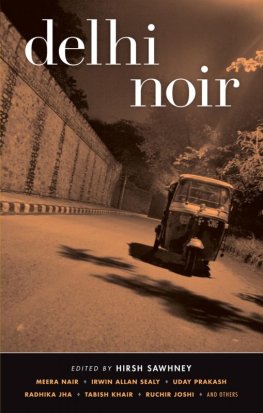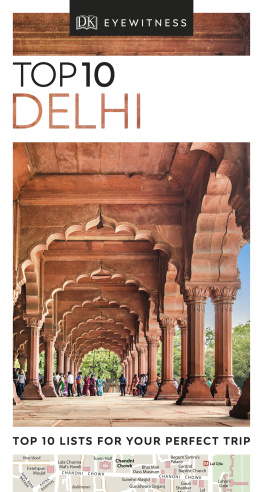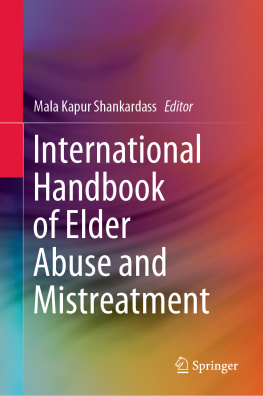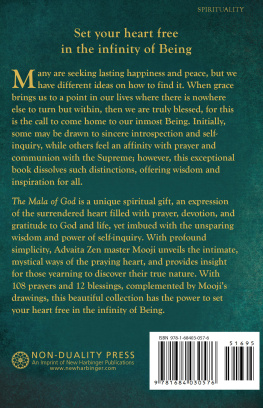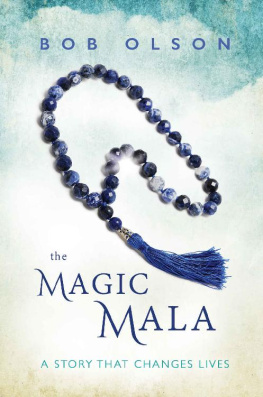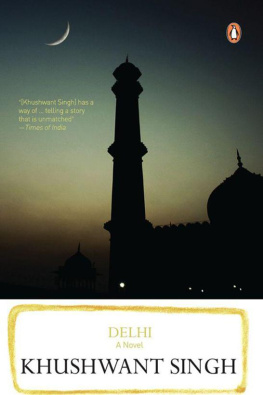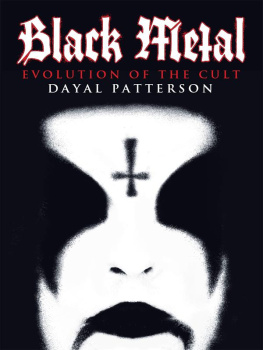Mala Dayal - Celebrating Delhi
Here you can read online Mala Dayal - Celebrating Delhi full text of the book (entire story) in english for free. Download pdf and epub, get meaning, cover and reviews about this ebook. year: 2010, publisher: Penguin Books Ltd, genre: Religion. Description of the work, (preface) as well as reviews are available. Best literature library LitArk.com created for fans of good reading and offers a wide selection of genres:
Romance novel
Science fiction
Adventure
Detective
Science
History
Home and family
Prose
Art
Politics
Computer
Non-fiction
Religion
Business
Children
Humor
Choose a favorite category and find really read worthwhile books. Enjoy immersion in the world of imagination, feel the emotions of the characters or learn something new for yourself, make an fascinating discovery.
- Book:Celebrating Delhi
- Author:
- Publisher:Penguin Books Ltd
- Genre:
- Year:2010
- Rating:4 / 5
- Favourites:Add to favourites
- Your mark:
- 80
- 1
- 2
- 3
- 4
- 5
Celebrating Delhi: summary, description and annotation
We offer to read an annotation, description, summary or preface (depends on what the author of the book "Celebrating Delhi" wrote himself). If you haven't found the necessary information about the book — write in the comments, we will try to find it.
Celebrating Delhi — read online for free the complete book (whole text) full work
Below is the text of the book, divided by pages. System saving the place of the last page read, allows you to conveniently read the book "Celebrating Delhi" online for free, without having to search again every time where you left off. Put a bookmark, and you can go to the page where you finished reading at any time.
Font size:
Interval:
Bookmark:
Who are the real makers of a city?
Delhi, located at the crossroads of history, has been occupied, abandoned and rebuilt over the centuries. It has been the capital of the Pandavas, the Rajputs, Central Asian dynasties, the Mughals and the British, and is best described as a melting pot of these vastly varying traditions and customs.
A galaxy of experts come together to offer fresh perspectives on the capital city. Originally part of the Sir Sobha Singh Memorial Lecture series organized by The Attic in collaboration with the India International Centre and the Indian National Trust for Art and Cultural Heritage, this updated selection explores Delhis living syncretic heritage.
The essays illuminate unknown and fascinating aspects of the citys history. We learn, for instance, how Sir Sobha Singh transplanted Delhis two foundation stones by bullock-cart in the stealth of the night from Kingsway Camp to Raisina Hill. In a different departure, archival records point to the fundamental ecological miscalculation in the British choice of trees to line the avenues of Imperial New Delhi. Place names, part of the cultural fabric of a city, unearth a vanishing history of Delhi, while the contrasting history of Sufi shrines draws attention to the spiritual masters, the pirs, and their search for truth.
This open-mindedness is reflected in the letters and public proclamations issued from the Mughal court in the Delhi uprising of 1 857. These were emphatically religious, yet inclusive of both Hindus and Muslims. In our time a different take on the reality of refugee and resettlement colonies shows the blindness of the citys civic planners, and reveals who was making and who was breaking the city in the twentieth century.
As the centre of political power for centuries, many great artists, poets and musicians found patronage at the royal courts of Delhi. The city has been home to a rich tradition of classical musicboth the Sufi traditions of Central Asia and the darbari (courtly) style explore the development of the rich Delhi gharana tradition, as well as the birth, growth, banishment and reinvention of the language of Delhi over centuries. The many peoples who made Delhi their home through the centuries have all contributed to the creation and development of a sumptuous cuisine noted for its rich variety.
Celebrating Delhi takes you on a journey, both varied and unexpected.
Cover photographs and design by Bena Sareen
Coasters courtesy Play Clan, www.theplayclan.com
DELHI

UK | Canada | Ireland | Australia
New Zealand | India | South Africa
Penguin Books is part of the Penguin Random House group of companies whose addresses can be found at global.penguinrandomhouse.com.

This collection published 2010
Copyright Mala Dayal 2010
The moral right of the author has been asserted
ISBN: 978-0-670-08482-1
This digital edition published in 2016.
e-ISBN: 978-8-184-75273-1
This book is sold subject to the condition that it shall not, by way of trade or otherwise, be lent, resold, hired out, or otherwise circulated without the publishers prior consent in any form of binding or cover other than that in which it is published and without a similar condition including this condition being imposed on the subsequent purchaser.
This anthology is dedicated to
Ravi Dayal 19372006
The quintessential Dilliwala, unapologetic bidi smoker, uncompromising publisher and editor, loyal friend and relation, who helped structure this series of lectures on the city he loved, its refinement and its language as yet untainted by Punjabi.
Introduction
Perminder Singh
My Father the Builder
Khushwant Singh
Discovering the Ancient in Modern Delhi
Upinder Singh
Religious Rhetoric in the Delhi Uprising of 1857
William Dalrymple
The Pirs Barakat and the Servitors Ardour: The Contrasting History of Two Sufi Shrines in Delhi
Sunil Kumar
Avenue Trees in Lutyens Delhi: How They Were Chosen
Pradip Krishen
Delhis History as Reflected in Its Toponymy
Narayani Gupta
The Dilli Gharana
Vidya Rao
The Language of Delhi: Birth, Growth, Banishment, Reinvention
Sohail Hashmi
City Makers and City Breakers
Dunu Roy
Dilli Ka Asli Khana (The Real Cuisine of Delhi)
Priti Narain
A Kayasthas View of Delhi
Ravi Dayal
This book is a compilation of eleven lectures held at the India International Centre (IIC) over a nine-month period in 2006. Originally titled the Sir Sobha Singh Memorial Lectures, they were organized by The Attic (Amarjit Bhagwant Singh Charitable Trust) in collaboration with the IIC and INTACH (Indian National Trust for Art and Cultural Heritage). In their subject matter, planning and inspiration they owed everything to informal and insightful discussions with Naina Dayal and Ravi Dayal, to whom the lecture series and now this book is dedicated.
Sobha Singh was a twenty-two-year-old contractor working on the KalkaSimla railroad when he visited Delhi in 1911. He was present at the Delhi Darbar at which King George V declared that the capital of British India would be shifted from Calcutta to Delhi. He saw his opportunity and took it.
Rarely was a man so identified with the birth of a city as Sir Sobha Singh was with New Delhi, translating into sandstone and marble most of the imperial blueprints of Lutyens and Baker. Few builders in the world have left behind as tributes to their genius such an imposing list of edifices encompassing most of the colonial face of Delhi as he has done, says Khushwant Singh.
The original introduction to the series of lectures is as good an introduction to the book as it was to the lectures: This series of lectures encompasses many facets of the life of Delhiits history, architecture, cuisine, music, environment, and the arts.
The first lecture (and article) My Father the Builder by Khushwant Singh, author, historian and raconteur, set the tone and style for the series. His celebrity status ensured a huge audience with more people who couldnt get in to hear him than those who did. At the age of ninety, his memory was undimmed, his style elegant, his scholarship undoubted and his humour undiminished. This is a first-hand account of the building of New Delhi and the important role his father Sir Sobha Singh played in its construction. He talks of the building of this imperial city which he witnessed rising in front of my eyes set against the backdrop of the personalities, English and Indian, who made it possible.
Most of us see Delhi as a city of imposing medieval forts, palaces and tombs. But Upinder Singh in Discovering the Ancient in Modern Delhi strongly believes that the less sexy ancient remains, the broken bits of pottery, the prehistoric stone tools, the glazed earthenware and the stone pillars tell an equally fascinating story. She suggests that the antiquity of the Purana Qila could go back to 1000 BC and may even be linked to the legendary city of Indraprastha mentioned in the Mahabharata. Excavations in the villages of Anangpur, Kharkhari Nahar, Bhorgarh and Mandoli of the National Capital Region of Delhi have revealed that they were stone age and Harappan sites. She says that with a cultivated sensibility ordinary ancient remains can be animated by imagination.
Font size:
Interval:
Bookmark:
Similar books «Celebrating Delhi»
Look at similar books to Celebrating Delhi. We have selected literature similar in name and meaning in the hope of providing readers with more options to find new, interesting, not yet read works.
Discussion, reviews of the book Celebrating Delhi and just readers' own opinions. Leave your comments, write what you think about the work, its meaning or the main characters. Specify what exactly you liked and what you didn't like, and why you think so.

